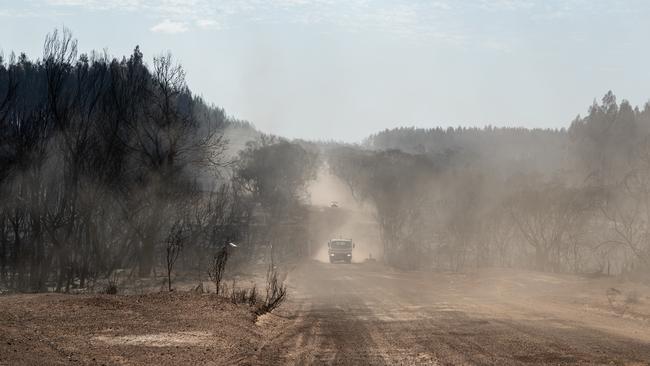Resilient residents of Kangaroo Island start down the long road to recovery
The residents of bushfire-ravaged Kangaroo Island have been through hell. But they are determined to fight back, even though it will take years.
Bushfire Support
Don't miss out on the headlines from Bushfire Support. Followed categories will be added to My News.
- Let’s #BookThemOut to help out the recovery
- Subscriber rewards: Win Adelaide Oval Stadium Club memberships
They’re a resilient mob, these islanders.
The bushfires which raged for more than three weeks put them through hell, and it’ll be a long road back.
But they’ll get there.
Major Trent Harron, who is heading up the army’s recovery effort on Kangaroo Island, perhaps sums it up best.
“The community here must be among the strongest and most resilient Australians that we have,” he says.
Resilient. It’s a theme which is impossible to ignore when touring around the island, speaking to the people who have lived through one of the biggest natural disasters the state has ever seen.
Long-time locals say the inferno which started on December 20 and burnt for the next three weeks will change the island forever.
The fire ripped through more than 210,000ha of land. The once-iconic lush, green forest of Flinders Chase National Park has been reduced to an apocalyptic wasteland of charcoaled tree trunks sitting on an endless bed of ash.
Most of the pastoral land on the western half of the island has also been burnt. About 43,000 livestock are dead, 89 homes destroyed, hundreds of outbuildings reduced to rubble and nearly 300 vehicles gutted.
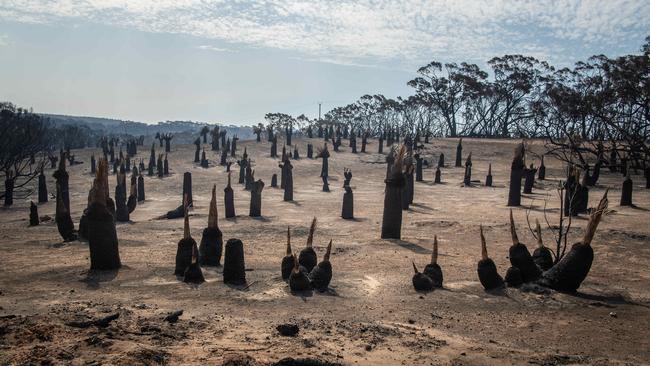
The wildlife population which had called the western half of the island home has been decimated. We don’t yet know the wildlife toll and probably never will. Experts say they wouldn’t be surprised if 25,000 koalas had perished.
Countless kangaroos, wallabies, echidnas, possums and precious glossy black cockatoos were caught up in the inferno.
Many animals that survived the initial onslaught have had the habitat which provided their food and shelter razed, and are likely to starve to death.
Farmers have lost thousands of kilometres of fencing they relied on to manage their properties. They’ve had to carry out the heartbreaking task of burying sheep and cattle by the hundreds.
Tourism destinations ranging from the high-end Southern Ocean Lodge to more budget-friendly Western KI Caravan Park have been gutted.
The intensity of the fire was something no one could have imagined. It was so hot, so big and so ferocious it created its own weather system. Locals talk of a seeing a nuclear-bomb-style mushroom cloud and battling an unnatural wind that tried to suck them back into the inferno.
The wind was so strong and the fire travelling so fast that the tops of some trees which were burnt at the base remain unscathed. Other trees simply exploded before they had a chance to burn. Signs made with aluminium, a metal which can withstand heat of 600C, disintegrated. Bitumen roads melted.
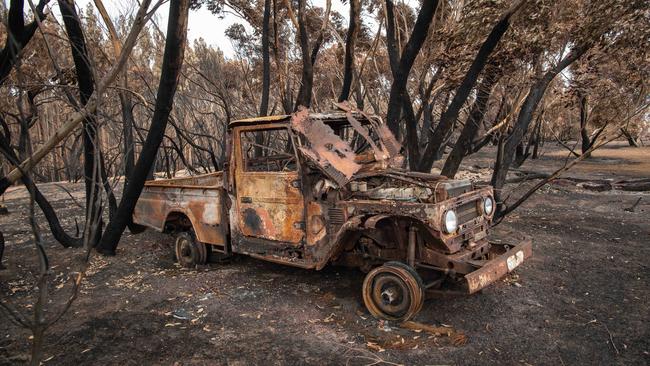
“The fire was relentless. Savage. It didn’t care what was in its path,” garlic farmer Shane Leahy says.
And it kept coming. In waves. Just when the firefighters, farmers and national parks staff trying to contain the blaze thought they might have an edge, it would flare again.
The big one hit on January 3. Some lost everything. Their homes. Their land. Their sheep. Their livelihood.
“It’s just disgusting,” says Lilly Buick, who lost three houses, thousands of sheep and much of the land she farms with her partner Josh Graham.
“Some people lost completely everything. That’s their whole life worth of breeding, their studs … and to have it gone in a day … it’s just cruel.
“I think the hardest part is the stock that’s been lost – that was just brutal.
“I just don’t want anyone else to have to go through it. The island has copped enough already.”
Mayor Michael Pengilly has been the voice of KI during the bushfire saga.
He copped some external flack for declaring on radio that the island was “still open for business” and urging tourists to visit – just hours before all hell broke loose in the horrific conditions of January 3.
The former Liberal MP also started a social media furore when he called former US president Barack Obama “foolish” and “pathetic” for linking the Australian bushfires with climate change.
But he spent weeks on end fighting the blaze, either with the CFS or with his own farm unit, and has won almost universal praise from locals for the way he has handled both the fire itself and the recovery process.
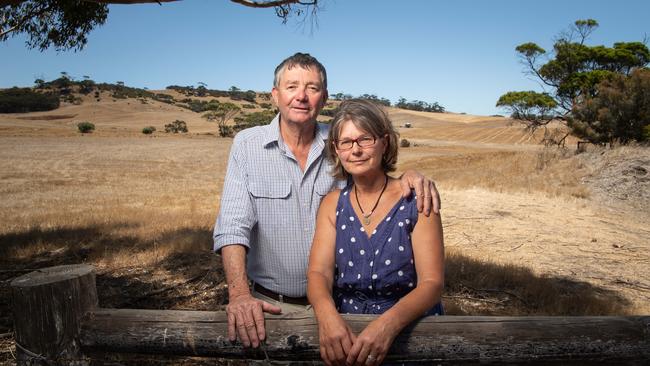
MORE NEWS:
Epic twist in KI’s tale of true grit and garlic
At one point, his own property near Emu Bay was 15 minutes away from going up in flames before a wind change pushed the fire in another direction.
Throughout the crisis, Mr Pengilly’s wife Jan spent hours on end glued to an online CFS map as a red-shaded emergency zone gradually spread across the island.
“It was almost like you’re waiting for a cyclone,” she says.
“You know what the weather’s going to be like, and you know it’s not going to be good.
“But nobody would have thought it was going to be as bad as what it is. And nobody would have thought it would just keep on going.”
Jan stayed in the couple’s caravan at the Kingscote evacuation centre when the fire spread again on January 9 and her husband returned to the fire front.
January 10, the morning after that third major scare, was the first time in the ordeal Mr Pengilly sounded beaten when interviewed on morning radio.
“It was really flattening,” he says. “Everyone just got despondent. Really despondent. We just thought, myself included, we’d never get on top of this thing.”
Conversations among local firefighters turned to when, not if, it would reach their own homes. Some were almost hoping the fire would advance to their land, so they could end their nervous wait and get on with the recovery.
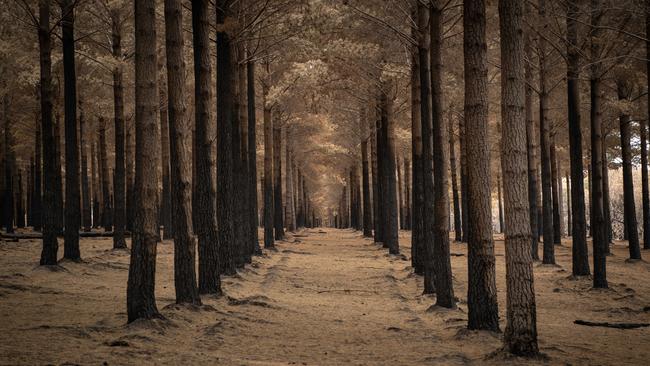
About 1000 firefighters, ranging from the CFS and MFS, national parks crews and farm units, were ultimately involved in the month-long battle against the blaze, which was finally officially contained on Tuesday.
Mr Pengilly reserves special praise for the 130 or so private units – farmers using their own utes and water tanks – who responded to tens of thousands of spot fires which flared continuously and randomly during the battle.
“I don’t think they’ve gotten enough recognition for their efforts, quite frankly,” Mr Pengilly says. “They’ve just been amazing. You just can’t underestimate what they can do with a ute and a tank of water, especially at night. It’s just huge.”
Some farmers didn’t see a CFS trucks in the first 36 hours of the firefight, so were totally reliant on each other and worked around the clock without rest or food to save property, livestock and buildings.
Firefighters will remain on edge until a significant rain ends the risk of more outbreaks, but for now the focus has moved to the long road to recovery.
Most islanders have been overwhelmed by the generosity of others and are quick to deflect sympathy of their individual circumstance, suggesting there is always someone else worse off.
Middle River farmer Josh Graham lost three homes, including his own, and 2500 sheep. None of the five properties he farms escaped unscathed. He owns about 3000ha of land and reckons he has about 300ha of pasture left. But still he considers himself fortunate.
“We’re a bit lucky there, I guess,” Mr Graham says. “Some of the burnt-out scrubs protected some of my sheep. If it wasn’t for them we would have lost the lot.”
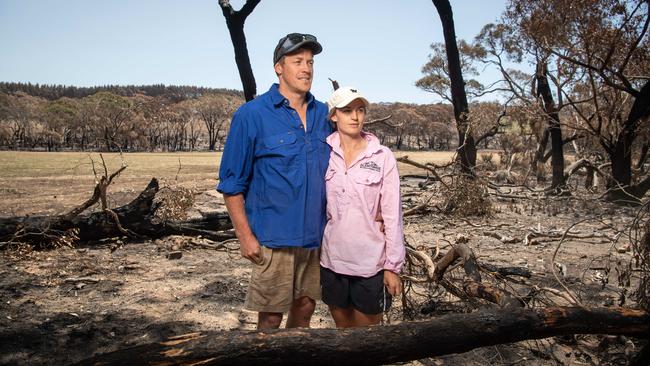
It’s a sentiment repeated over and over to anyone who has spent any time on the island since the scale of the fires became apparent.
Army reservist Lieutenant Reece Calvert is part of the Australian Defence Force’s Operation Bushfire Assist on the island and has seen first hand the selfless nature of the islanders.
“When we knock on someone’s door and say we’d like to help, they always have something (that we could do) but they insist that we move on to the next property, which they say is in more danger,” he says.
“The close-knit community that we are seeing here is just something that I’ve never seen before.
“The amount of time, service and resources they’re offering to each other in order to get everyone back on the road to recovery is truly humbling.”
Another group of soldiers asked a well-connected islander to help them identify people who needed help. Instead of simply providing a list of names, the Parndana local ferried the soldiers around to various families who had lost property and stock.
Four hours later, when they were thanking their tour guide for helping, the soldiers asked how their family had fared.
“Oh no, we’ve lost everything,” was the reply.
Support from the mainland, at the height of the crisis and the aftermath, has been significant. A GoFundMe page set up by Kangaroo Island Wildlife Park has received more than $2 million in donations. A mayoral relief and recovery bushfire fund is heading towards $2.5 million and there are stories of old ladies with walking frames anonymously donating thousands of dollars in unmarked envelopes.
Farmers from across the state have donated truckloads of hay and Harrow-Balmoral Football Club from country Victoria has ditched plans for a pre-season training camp and will instead send a contingent of players to KI to help out.
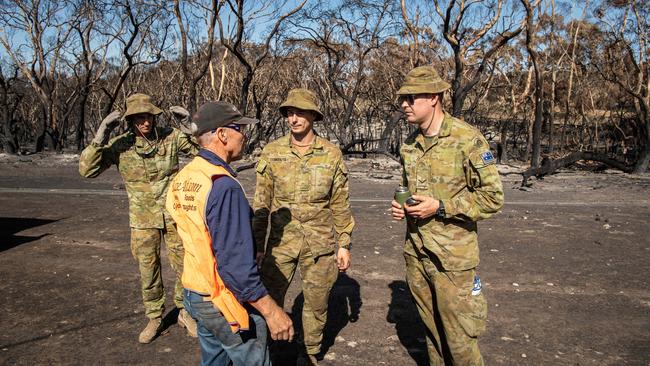
The army will maintain its presence on the island for weeks to come, good Samaritans have donated caravans to families who have lost their homes, and hundreds are expected to be part of a BlazeAid volunteer team who will help farmers rebuild destroyed fences for the next six months.
But the island’s farmers, tourism operators and civic leaders are under no illusion about the hard work and pain that lies ahead.
Specialist asbestos removalists will be required to clean up most of the gutted homes, which were from an era where use of the toxic building material was widespread.
The council has promised to minimise red tape when insurance claims are settled and families are ready to rebuild, but the residents know there won’t be enough qualified local builders to satisfy demand.
Mr Pengilly is concerned that some farmers will struggle to make ends meet. There’ll be immense strain on many relationships and the mental health of everyone affected is already front of mind.
“The farming sector that’s been burned will take two or three years before they get any appreciable income,” he says.
“Keeping marriages together might be hard, because it’s gonna get very tough. The mental health, particularly farmers who have been out shooting stock, is going to be a priority – they’re really going to struggle there.
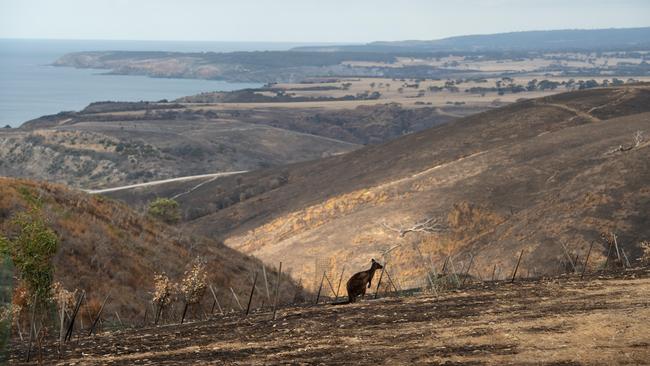
“This fire was like nothing anyone’s ever seen before and will change the island forever. It’ll change the culture of the island. It will change the social fabric of the island. It will change the economy of the island.
“We’ve now got to get our farming sector and tourism sectors up again. And we’ve got to rebuild confidence in the tourism industry. And it’s going to take a couple of years to rebuild some of these places.”
Leon Bignell, the Labor MP for the seat of Mawson which takes in Kangaroo Island, is on the opposite side of the political spectrum to Mr Pengilly.
But the duo find some rare common ground when they talk about the resilient nature of the islanders, and the long path towards recovery.
“Their character has been amazing,” Mr Bignell says.
“Everyone’s just got nothing left in the tank. They keep getting up and going out, cleaning up the properties and still trying to put the fires out. Just think of the horror of shooting thousands of your own sheep and cattle and burying them. It’s horrific.
“We’re going to have to keep an eye on these people because mental health is going to be a major issue. We need to make sure that the Government resources that properly. We’re going to have things that pop up in three months, six months, a year that are going to drive people to dark places.
“You know, when some of these farmers see their neighbours ewes dropping lambs in spring, it’s going to remind them that they don’t have any sheep. So it’s really important that we have a well co-ordinated mental health response for the long-term.”
Mr Bignell is also concerned about the second round of victims the bushfires are likely to threaten – the businesses which rely on both a thriving farming and tourism sector to survive. He has urged mainland Australians to continue to use the island, which has a population about 4500, as a holiday destination.
“Come and visit us. There’s lots of koalas over here that didn’t get burnt, they just want a cuddle. So come over and cuddle them.”
